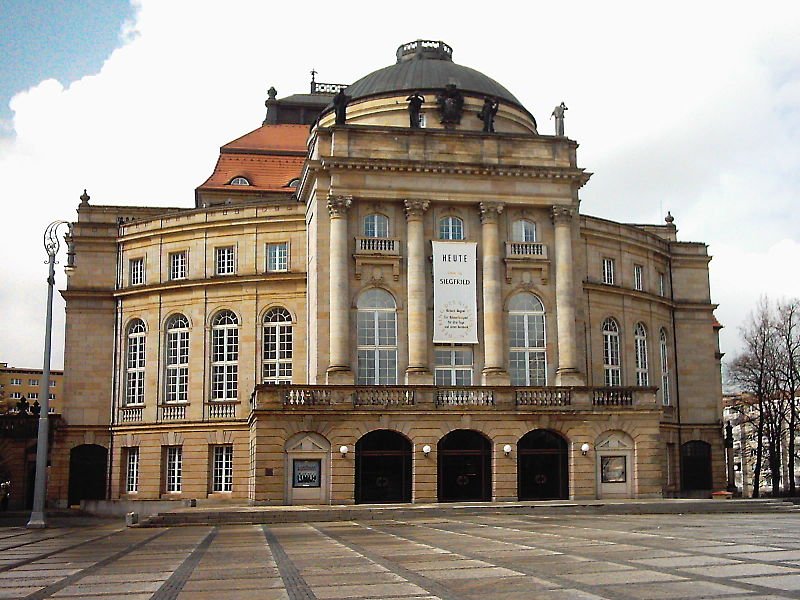 Chemnitz Opera House
Chemnitz Opera HouseSource: https://commons.wikimedia.org/wiki/File:Chemnitz_Oper_2.JPEG
Author: Zairon

Chemnitz (Upper Sorbian: Kamjenica, Czech: Saská Kamenice) is the third largest city in Saxony, Germany, after Dresden and Leipzig. It covers 221 sq km (85 sq mi) and has a population of 243,000 people (2012 estimate).
Chemnitz is located in the northern foothills of the Ore Mountains. It got its name from the river Chemnitz that flows through it before emptying into the river Mulde.
Human habitation in Chemnitz goes back to an early Slavic settlement. It was first documented in 1143. It was granted the rights of an imperial city by the Holy Roman Emperor Frederick I in around 1170. During the medieval period it grew as a center for textile production.
Chemnitz was a producer of military hardware during the Second World War. As a result, it was heavily bombarded. After the war, it was reconstructed in the socialist style. Between 1953 and 1990, it was known as Karl-Marz-Stadt, reverting to its former name following German reunification.
How to go to Chemnitz
There are train services to Chemnitz from major cities including Leipzig, Dresden, Zwickau, Nuremberg, Erfurt, Weimar, Jena and Gera. Catholic parish church of St Joseph in Chemnitz, Germany
Catholic parish church of St Joseph in Chemnitz, GermanySource: https://commons.wikimedia.org/wiki/File:St._Joseph_(Chemnitz).jpg
Author: Botulph

Places of Interest in Chemnitz
- Arktisch-Alpiner Garten der Walter-Meusel-Stiftung
- Botanischer Garten Chemnitz
- Chemnitz Opera House
- Karl Marx Monument
- Kulturkaufhaus Tietz
- Museum Gunzenhauser
 Latest updates on Penang Travel Tips
Latest updates on Penang Travel Tips

Copyright © 2003-2025 Timothy Tye. All Rights Reserved.

 Go Back
Go Back